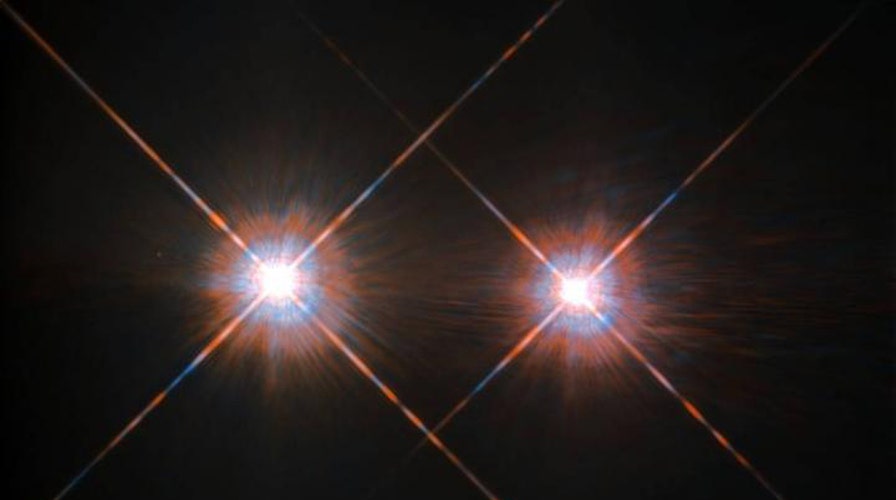Fox News Flash top headlines for June 12
Fox News Flash top headlines are here. Check out what's clicking on Foxnews.com.
A newly published study says that the building blocks for life appear in stellar nurseries -- areas in deep space where new stars are formed -- well before the stars actually form.
The research notes that organic molecules methanol and acetaldehyde have been found in these stellar nurseries "hundreds of thousands of years" before the stars actually form, according to a University of Arizona statement obtained by Fox News. This flies in the face of previous research, which says that proto-stars need to be present before complex organic molecules can be observed.
"These starless cores we looked at are several hundred thousand years away from the initial formation of a protostar or any planets," said the study's co-author and University of Arizona astronomy professor Yancy Shirley in a statement. "This tells us that the basic organic chemistry needed for life is present in the raw gas prior to the formation of stars and planets."
SCIENTISTS DISCOVER DISTANT 'MIRROR IMAGE OF THE EARTN AND THE SUN
The study's lead author, Samantha Scibelli, notes that researchers have long debated where and how to look for the building blocks of life and how they end up on planets other than Earth.
"The exact processes at play are still being debated, because the theoretical models still don't quite match what we see," Scibelli added. "With this paper, we can better constrain the mechanisms of formation that might be taking place by telling the theorists how abundant these molecules are."
The findings have been published in The Astrophysical Journal.
As of June 2020, more than 4,000 exoplanets have been identified, including a "mirror image" of the Earth and sun that was discovered earlier this month.
Scibelli, a graduate student at the university, added that previous research focused on one molecule, methanol, to look for life. In the new study, methanol was found in all 31 of the pre-stellar cones, but 70 percent of them also contained acetaldehyde, which the researchers believe provides "evidence that complex organic molecules are much more widespread in nascent star-forming regions than previously thought."
MOLECULAR OXYGEN DISCOVERED IN ANOTHER GALAXY FOR FIRST TIME EVER
"Inside these cores, which we think of as birthplaces, cocoons and nurseries of low-mass stars similar to our sun, the conditions are such that it's hard to even create these molecules," Scibelli explained. "By doing surveys like this, we can understand better how precursors to life come into existence, how they migrate and enter solar systems at later stages of star formation."
The findings in the research and particularly that in the Taurus Molecular Cloud can give researchers new insight into how our own Solar System formed, Scibellia explained.
"Our solar system was born in a cloud like this, but the cloud is not there anymore for us to see," she said. "Looking at objects in space is a bit like looking at a photo album with snapshots taken of different people at different stages of life, from their baby days all the way to old age, and in our case starless cores serve as stellar sonograms."
Researchers recently discovered molecular oxygen for the first time ever outside the Solar System, 561 million light-years from Earth in the Markarian 231 galaxy.

